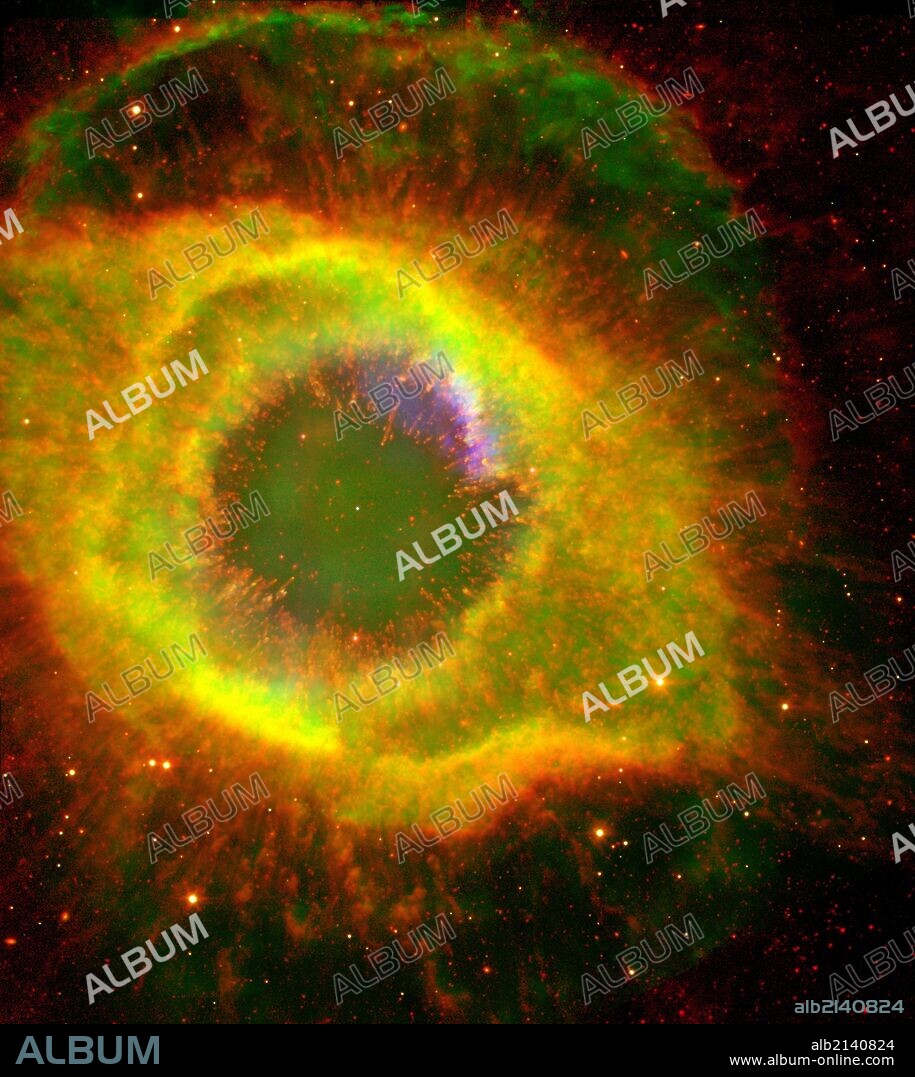alb2140824
Six hundred and fifty light-years away in the constellation Aquarius, a dead star about the size of Earth, is refusing to fade away peacefully. In death, it is spewing out massive amounts of hot gas and intense ultraviolet radiation, creating a spectacular object called a "planetary nebula. " Hubble Space Telescope (HST), Spitzer Space Telescope.

|
Add to another lightbox |
|
Add to another lightbox |



Buy this image.
Select the use:

Title:
Six hundred and fifty light-years away in the constellation Aquarius, a dead star about the size of Earth, is refusing to fade away peacefully. In death, it is spewing out massive amounts of hot gas and intense ultraviolet radiation, creating a spectacular object called a "planetary nebula. " Hubble Space Telescope (HST), Spitzer Space Telescope.
Caption:
Six hundred and fifty light-years away in the constellation Aquarius, a dead star about the size of Earth, is refusing to fade away peacefully. In death, it is spewing out massive amounts of hot gas and intense ultraviolet radiation, creating a spectacular object called a "planetary nebula." Hubble Space Telescope (HST), Spitzer Space Telescope. (Photo by: Universal History Archive/UIG via Getty Images)
Category:
UIG Satellite & Aerial
Credit:
Album / Universal Images Group / Universal Science Images \ UIG
Releases:
Image size:
3952 x 4422 px | 50.0 MB
Print size:
33.5 x 37.4 cm | 13.2 x 14.7 in (300 dpi)
Keywords:
ABSTRACT ART • ABSTRACT • AQUARIUS • ARTMOVEMENT: ABSTRACT • ASTRONOMIA • ASTRONOMY • BEAUTY IN NATURE • COLORFUL • CONSTELLATION AQUARIUS • CONSTELLATION • GLOWING • HUBBLE SPACE TELESCOPE • NEBULA • NO PEOPLE • OUTDOOR • OUTDOORS • OUTERSPACE • OUTSIDE • PLANETARY NEBULA • SPACE (COSMOS) • SPACE EXPLORATION • SPACE • SPATIAL • SPITZER SPACE TELESCOPE • UIG SATELLITE & AERIAL • VERTICAL LINES • VERTICAL • WITHOUT PEOPLE


 Pinterest
Pinterest Twitter
Twitter Facebook
Facebook Copy link
Copy link Email
Email
